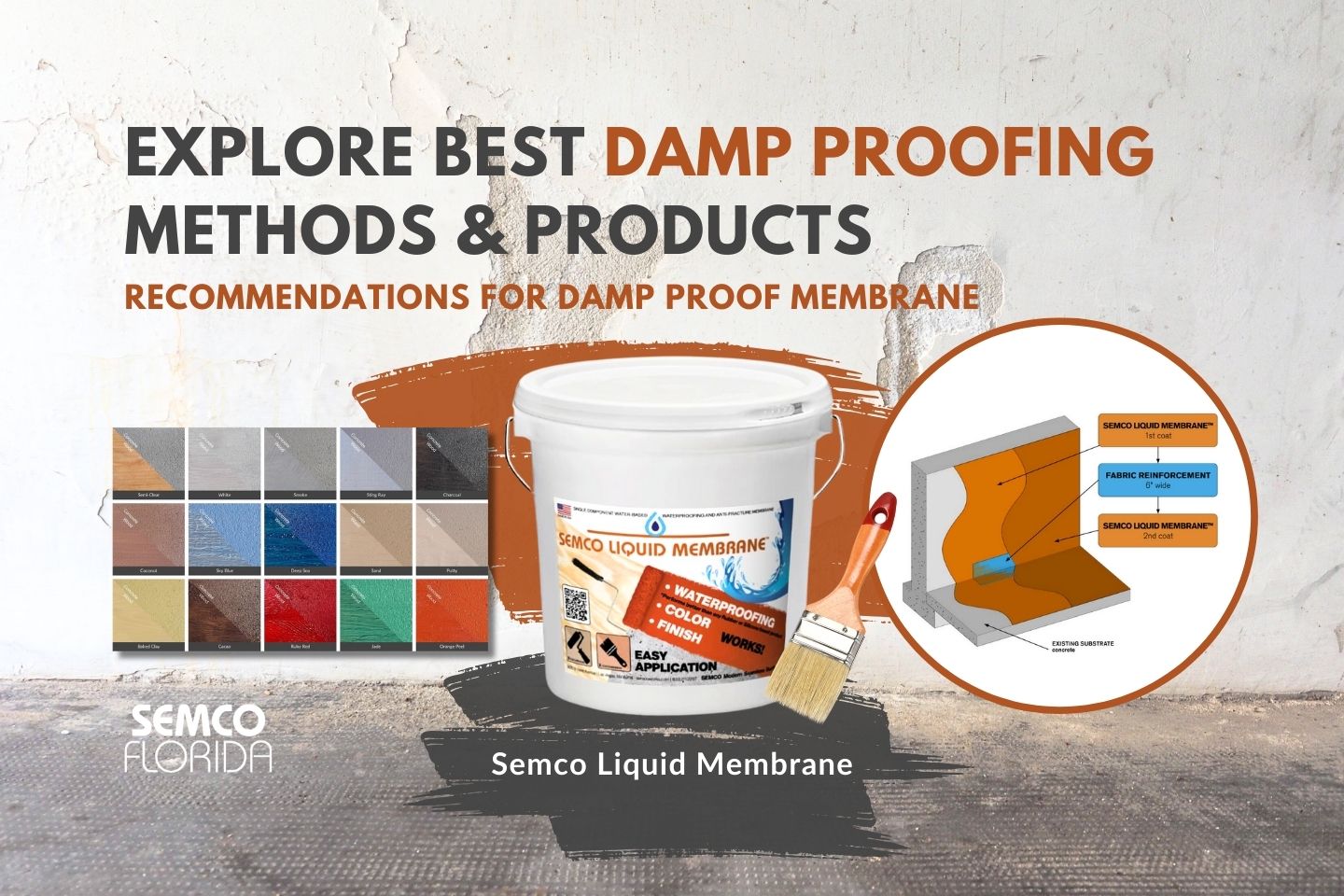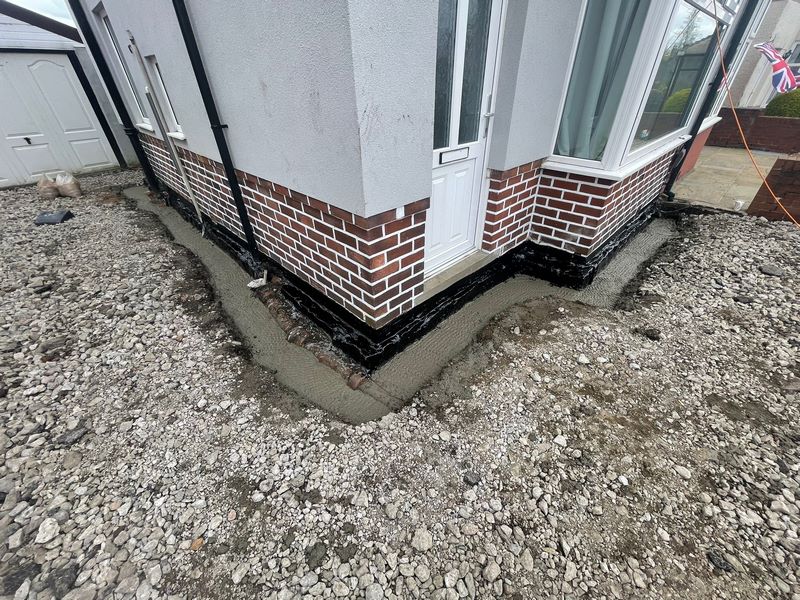Why professional damp proofing newcastle essential for structural protection
Checking Out the Different Strategies and Solutions for Effective Damp Proofing
Moisture in structures poses considerable obstacles to both architectural integrity and indoor air high quality. Different strategies and remedies have actually arised to fight this pervasive concern. From standard damp-proof membranes to innovative chemical treatments, each approach uses special advantages. Recognizing these choices is crucial for effective dampness control. Choosing the appropriate remedy depends on details structure problems and requirements, prompting additional expedition into the most reliable wet proofing methods offered.
Understanding the Reasons For Wetness
Moisture can occur from different sources, understanding these reasons is essential for efficient remediation. Commonly, dampness originates from 3 primary resources: increasing damp, penetrating wet, and condensation. Increasing moist occurs when groundwater takes a trip up-wards with permeable products, such as brick or rock, frequently because of a lack of a reliable barrier (mould treatment newcastle). Passing through wet is commonly created by exterior variables, consisting of roof leaks, damaged rain gutters, or harmed walls, enabling water to infiltrate a residential or commercial property. Condensation, on the various other hand, results from excess wetness airborne, frequently worsened by inadequate ventilation and temperature level differences, resulting in water beads forming on surfaces. Determining these underlying concerns is important, as each kind of wetness requires a tailored technique for removal. Proper evaluation helps in identifying the most efficient options, inevitably guarding the structural honesty of a building and boosting indoor air top quality
Traditional Damp-Proof Membrane Layers

Chemical Damp-Proofing Solutions
Chemical damp-proofing remedies supply a cutting-edge approach to avoid moisture invasion in buildings. These techniques typically involve the application of liquid chemicals that penetrate stonework and create an obstacle versus increasing damp. Frequently made use of chemicals consist of silanes, siloxanes, and various other water-repellent representatives that respond with surface materials to create a hydrophobic layer.The application procedure generally requires exploration holes into the walls, infusing the chemical service, and allowing it to cure. This method is particularly useful for older frameworks where standard damp-proof membranes may be not practical. In addition, chemical damp-proofing can be much less turbulent and more cost-efficient than considerable restoration projects.While efficient, these services rely on proper application and environmental conditions for peak efficiency. Normal maintenance and monitoring are necessary to ensure the longevity of the damp-proofing therapy. In general, chemical damp-proofing stands for a functional option for guarding buildings versus moisture-related damage
Tooth Cavity Wall Surface Building Strategies
Cavity wall surface building techniques offer countless benefits, particularly in dampness control and energy performance. By incorporating an air space in between 2 layers of masonry, these walls properly mitigate water ingress while improving insulation. This combination not only secures frameworks from wetness but likewise adds to lowered energy usage.
Advantages of Cavity Walls
When thinking about reliable wet proofing methods, the advantages of tooth cavity wall surfaces stand out prominently. Cavity walls consist of two separate layers, producing an air gap that effectively decreases wetness penetration. This style lessens the threat of wetness, as the external wall surface works as a barrier versus rainfall and water access. In addition, dental caries wall surfaces improve thermal insulation, which adds to energy performance by decreasing warm loss. They likewise give audio insulation, assisting to develop a quieter interior atmosphere. The air space allows for air flow, which assists in wetness control and decreases the likelihood of mold development. These advantages not only improve the total convenience of a building yet additionally add to its durability and architectural honesty.
Wetness Control Strategies
Effective dampness control techniques are crucial in dental caries wall surface building to ensure lasting defense against wetness. One main approach involves the consolidation of weep openings, which help with water drain from the dental caries, avoiding buildup. Furthermore, the usage of breathable membranes can assist take care of dampness levels while enabling entraped vapor to leave. Correct positioning of insulation is also critical, as it ought to not block drainage courses. Moreover, making sure that the external leaves of the tooth cavity wall are constructed with waterproof products improves overall durability. Routine upkeep checks are necessary to recognize any kind of clogs or damages early, guarding the framework's honesty. Inevitably, a mix of these methods develops a durable protection versus dampness breach in dental caries wall surfaces.
Insulation and Power Performance
Insulation plays an important function in improving power effectiveness within tooth cavity wall surface building. By integrating protecting products, these walls create a thermal obstacle that minimizes heat loss and reduces energy intake. Reliable insulation not just assists preserve a steady indoor temperature level yet additionally minimizes the threat of moisture, as it stops condensation within the wall tooth cavity. Various strategies, such as making use of rigid foam boards or mineral woollen, can be utilized to achieve perfect insulation efficiency. In addition, appropriate installment is necessary to assure that gaps and gaps are minimized, which can or else endanger power efficiency. Ultimately, a well-insulated cavity wall adds greatly to general sustainability and decreases heating & cooling costs for homeowners.
Exterior Damp Proofing Techniques
External moist proofing methods are crucial for securing frameworks from wetness seepage. Two efficient methods include the application of water resistant membrane layers and the installation of French drains pipes. These solutions help minimize water build-up and maintain the stability of buildings.
Waterproof Membrane Layer Application
While numerous methods exist for protecting against moisture access, the application of water-proof membranes continues to be a highly efficient exterior wet proofing technique. These membranes are typically made from materials such as polyethylene, rubber, or changed bitumen, offering a durable barrier check here against water infiltration. The installation process includes using the membrane to the outside surface areas of wall surfaces or foundations, making sure total insurance coverage to avoid leakages. Appropriate adhesion and securing at joints are essential to making the most of performance. Water-proof membrane layers can be applied in various types, including fluid finishes and sheet membranes, permitting adaptability based upon the details requirements of the framework. This approach not only shields structures from moisture but additionally improves their long life and architectural honesty.
French Drainpipe Installment
One effective technique for taking care of groundwater and preventing dampness buildup around a structure's foundation is the installation of a French drainpipe. This drain system consists of a trench loaded with gravel and a perforated pipe that redirects surface water away from the structure. Correct installation requires mindful preparation, making certain that the drainpipe inclines away from the framework to facilitate optimal water circulation. Furthermore, the location of the drainpipe is important; it must be placed in areas vulnerable to pooling or excess wetness. Normal maintenance, including cleaning particles from the gravel and ensuring the pipeline continues to be unobstructed, is important for long-term effectiveness. Eventually, a well-installed French drain can significantly minimize the danger of water-related concerns in foundations and basements.
Inside Waterproofing Methods
Inside waterproofing techniques are crucial for protecting a building's interior from dampness seepage and possible water damages. These strategies usually include the application of customized products and techniques designed to create a wetness barrier within the structure. One usual technique is using waterproof finishings or sealants on walls and floorings, which avoid dampness from penetrating surfaces.Additionally, mounting interior drain systems, such as sump pumps, can effectively manage water build-up in cellars and crawl rooms. Another technique entails using vapor barriers, which are mounted to inhibit wetness activity from the ground right into living spaces.Moreover, resolving any type of fractures or gaps in wall surfaces or foundations with appropriate sealants ensures a comprehensive protection versus water intrusion. By carrying out these indoor waterproofing strategies, homeowner can substantially decrease the danger of mold and mildew growth, structural damage, and other moisture-related issues. Proper execution of these techniques is essential for long-lasting protection and structure integrity.
Regular Maintenance and Evaluation Practices
Routine upkeep and assessment practices are crucial for ensuring the long-term performance of moist proofing remedies in any type of structure. Routine checks enable homeowner to determine early indications of dampness invasion, such as peeling paint, mold and mildew development, and moldy odors. These indications can indicate underlying concerns that require immediate attention.Inspections should be performed at the very least annually, concentrating on susceptible locations like basements, crawl areas, and outside walls. Throughout these assessments, homeowner should analyze sealers, drain systems, and ventilation to verify they operate correctly.Additionally, keeping seamless gutters and downspouts is essential, as clogged up systems can bring about water accumulation near the foundation. Carrying out a routine maintenance schedule, along with prompt repair work, can substantially extend the life expectancy of moist proofing steps and secure the architectural integrity of the structure. Aggressive actions ultimately add to the total health and wellness of the living setting.
Frequently Asked Concerns
For How Long Does Damp Proofing Usually Last?
The period of damp proofing efficiency varies, typically lasting in between 20 to 50 years. Variables such as application quality, environmental problems, and upkeep practices significantly affect the long life of the wet proofing treatment.

Can I Damp Proof My Home Myself?
The individual pondered the expediency of do it yourself damp proofing. With appropriate study and the ideal materials, it is feasible. However, they likewise recognized the importance of specialist guidance to assure durable performance and stop future problems.
What Are the Indications of Inadequate Damp Proofing?
Signs of inefficient wet proofing include consistent stuffy odors, visible mold and mildew development, peeling paint, wet patches on wall surfaces, and wood degeneration - mould treatment newcastle. Homeowners must deal with these concerns promptly to stop more damages and health problems
Does Damp Proofing Affect Indoor Air High Quality?

Just How Much Does Professional Damp Proofing Cost?
Expert moist proofing prices vary considerably, normally varying from $1,000 to $5,000 relying on the property's dimension, the extent of the wet problem, and chosen approaches. Each situation requires a tailored analysis for exact pricing. Frequently, wetness stems from 3 primary sources: climbing wet, passing through wet, and condensation. When taking into consideration reliable wet proofing approaches, the benefits of cavity walls stand out plainly. Outside wet proofing approaches are important for securing frameworks from dampness seepage. While numerous approaches exist for preventing moisture ingress, the application of waterproof membranes stays an extremely efficient outside moist proofing technique. Signs of inefficient moist proofing include persistent moldy odors, visible mold and mildew development, peeling paint, moist patches on walls, and timber degeneration.